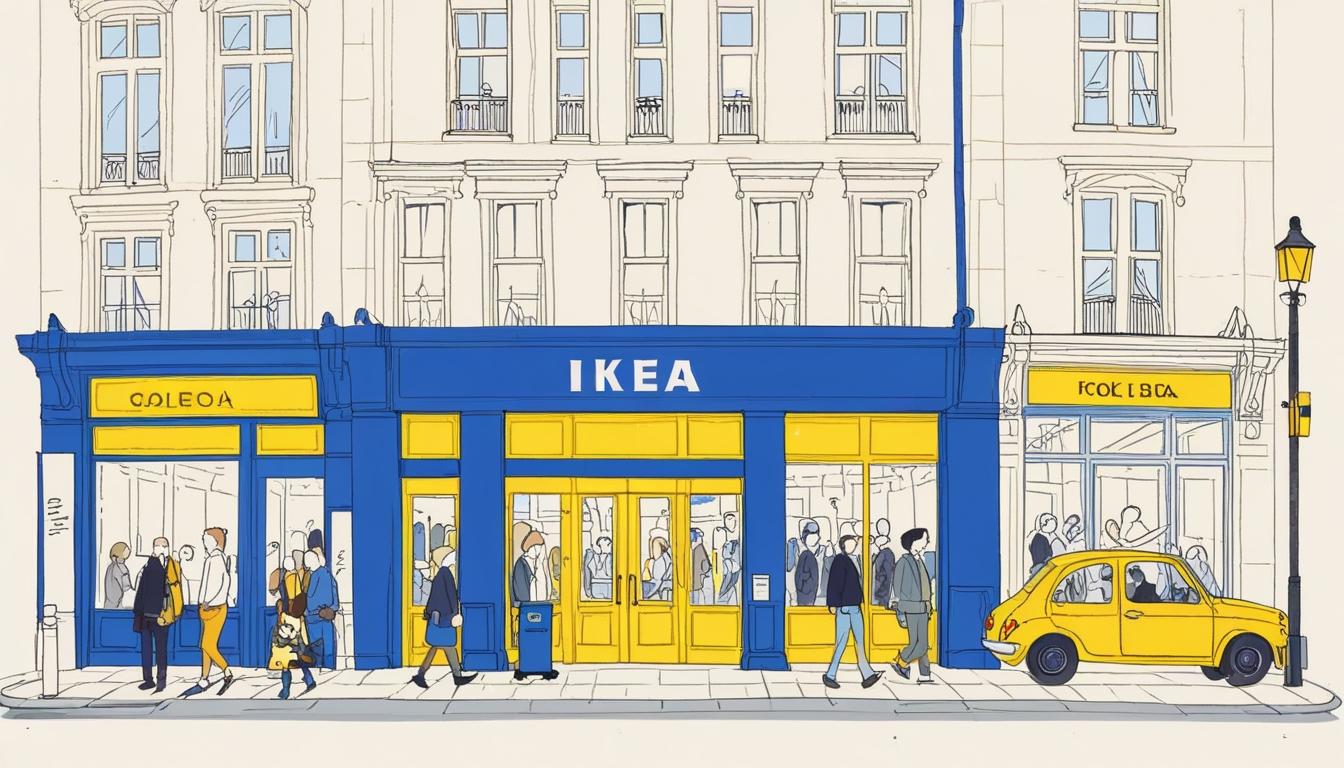Oxford Street, once a bustling centre of London’s furniture retail, underwent a significant transformation last week with the debut of Ikea's new store at Oxford Circus, located in the premises previously occupied by Peter Robinson and more recently by Topshop. The move marks a notable shift in an area that was historically home to illustrious names such as Maple & Co, Waring & Gillow, Liberty, and Heals, which were renowned for their luxurious displays and fine craftsmanship.
The Financial Times' architecture and design critic underscores the contrast between the old and the new, noting how the contemporary Ikea has taken over the former department store space, now featuring a mostly subterranean layout that is crammed with inexpensive items. On its opening day, the store buzzed with activity, enhanced by a lively atmosphere that included a DJ and staff distributing the retailer's signature blue bags. London’s Mayor, Sadiq Khan, attended the event, promoting a presumed revival of a street that has experienced decades of decline.
However, the new store's garish blue and yellow branding seems at odds with the rich history of Oxford Street. Critics argue that while the influx of shoppers may boost foot traffic, the aesthetics of the new retail space leave much to be desired. The windows are obscured by large advertisements, and consumers walking inside encounter a maze-like environment reminiscent of airport duty-free shops, rather than the inviting luxury previously associated with the area.
Contrary to the aspirational displays of traditional department stores, Ikea's approach focuses on volume and affordability. The store is designed to resonate with the practical needs of young Londoners, showcasing room settings that cater to actual living spaces. While the retailer presents a vision of accessible chic with its affordable homeware, there remains a question of whether this new offering aligns with the tastes and values of today's youth.
Historically, Ikea thrived by appealing to a generation eager to break away from their parents' more conventional decor. The allure of contemporary, coordinated living spaces, complete with chic shelving and stylish furnishings, was initially successful. Yet, the reality of self-assembly furniture often proved less glamorous, leading to frustration as customers faced the challenges of practical living.
One cannot help but ponder whether Ikea's current strategy will resonate with younger customers, many of whom regard the spacious lifestyles once enjoyed by their parents as unattainable. There appears to be a growing trend towards nostalgia for previous styles, with a resurgence of interest in ‘cottagecore’ aesthetics and mid-century modern designs. Even pieces once dismissed, such as traditional brown furniture, are now appreciated for their quality and sustainability, contrasting starkly with Ikea's mass-produced offerings.
The Financial Times critic concludes that Ikea’s latest venture in the West End evokes discomfort, presenting an image of overconsumption akin to fast fashion, despite the retailer's efforts to position itself as environmentally conscious and egalitarian. As the landscape of Oxford Street evolves, the implications of such retail developments on the cultural fabric and aesthetic legacy of this iconic area remain to be fully understood.
Source: Noah Wire Services
